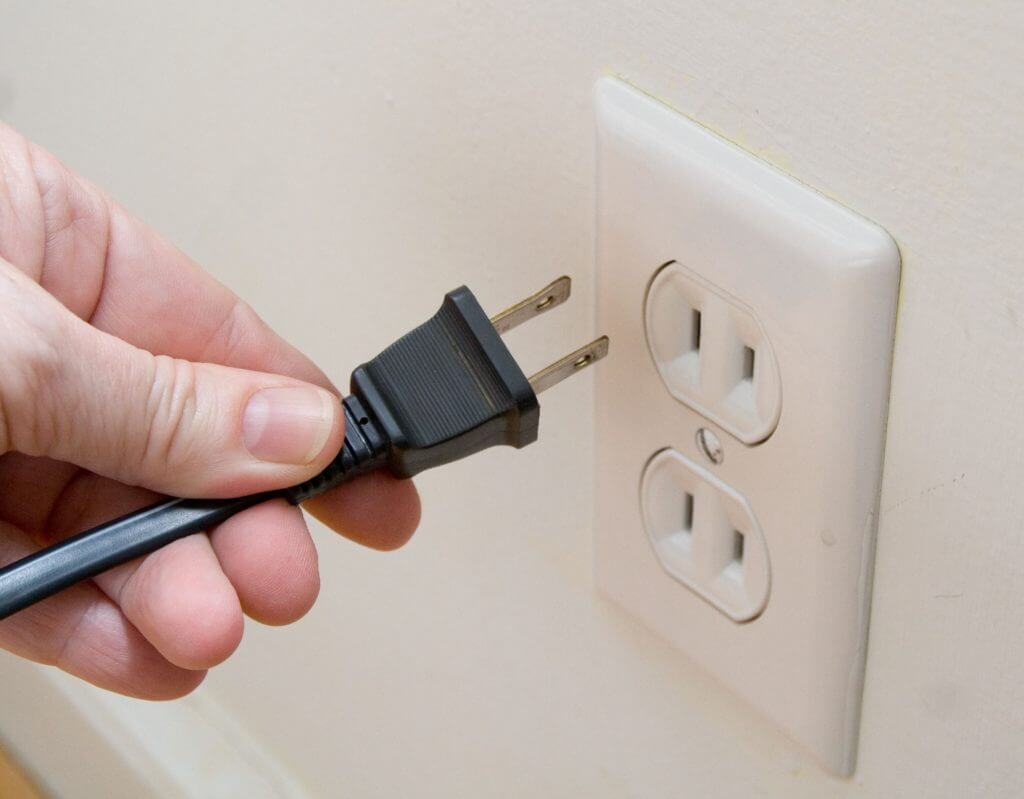




When was the last time you unplugged your television from the wall? How about your computer, or perhaps kitchen appliances like your toaster or blender? If you can’t remember, you’re not alone. Many Americans have electronic appliances in their homes that remain plugged in 24/7. The potential downside to this is that many electric appliances continue drawing power from wall outlets, even when they’re turned off.
The Environmental Protection Agency estimates that in a typical household, 75% of the total power used by consumer electronics is drawn when those items are switched off. In California, where the average household spends about $1,400 per year on energy bills, this waste amounts to an annual cost of around $1,050 (or $88 per month). Knowing when to unplug certain electronics is a simple way to manage your energy consumption and lower your electric bill.
“Standby power” is a blanket term that describes the energy used by electronic appliances when they are switched off, or not in use. Some items, in particular, are referred to as “energy vampires” because they require a continuous supply of power to function.
Modern consumer electronics offer many convenient features like remote controls and digital displays. These features are popular because they make devices easier to use, but they also increase a household’s standby power consumption.
A television set is a prime example of a residential energy vampire because it’s operated by remote control with a receiver. Remote control receivers must remain on at all times to await the activation signal, which in most cases is the power button.
Standby power consumption used to be a largely unheard-of concept, but as more people have become aware of its costs, the collective effort to reduce it has grown and advanced. The 21st century has brought with it new regulations aimed at controlling the standby power consumed by household appliances. Additionally, new technologies like home automation systems can be programmed to cut standby power to appliances when they aren't being used.
Other advances in conservation technology can help homeowners save even more on their annual energy costs. Modern home solar panel systems produce clean local energy and are being developed with new features that help reduce waste from standby power even further, such as batteries that can store excess energy for later use.
The first step to reducing your standby power consumption is to identify the biggest sources of waste in your home. Older appliances are common culprits, as they were designed without standby power consumption in mind. Fortunately, that has changed, and many modern Energy Star appliances are made with standby power requirements that ensure their efficiency.
While it can be beneficial to simply replace the older electronics in your home, it can also be very expensive and inconvenient, and may not be the only way for you to conserve. Using automatic timers for your television set, heater, and air conditioner reduces energy waste by cutting standby power to these devices while they aren’t in use, but still allows them to be conveniently ready when needed.
If possible, it can also be helpful to replace the older power adapters in your home with newer, lower wattage ones. Adapters are easier and cheaper to replace than appliances but still make an impact on energy consumption. If you have an older adapter that becomes warm when you plug it in, it is likely to use more power than necessary and should be replaced.
As a general rule, appliances that are remote activated or utilize digital displays tend to consume the most standby power, but not all of these devices can feasibly be unplugged whenever they’re not in use. Computers and cable boxes, for example, have lengthy restarting processes that make it difficult to regularly unplug them.
For many people with full schedules and busy lives, it can be difficult to remember every time they leave something plugged in. Power strips are an excellent way to manage standby power use and keep track of all your different appliances.
When several devices are plugged into a power strip, you can easily cut standby power to all of those devices at once, just by flicking a switch. Modern smart power strips can even detect when appliances are in standby mode and automatically cut off their power supply.